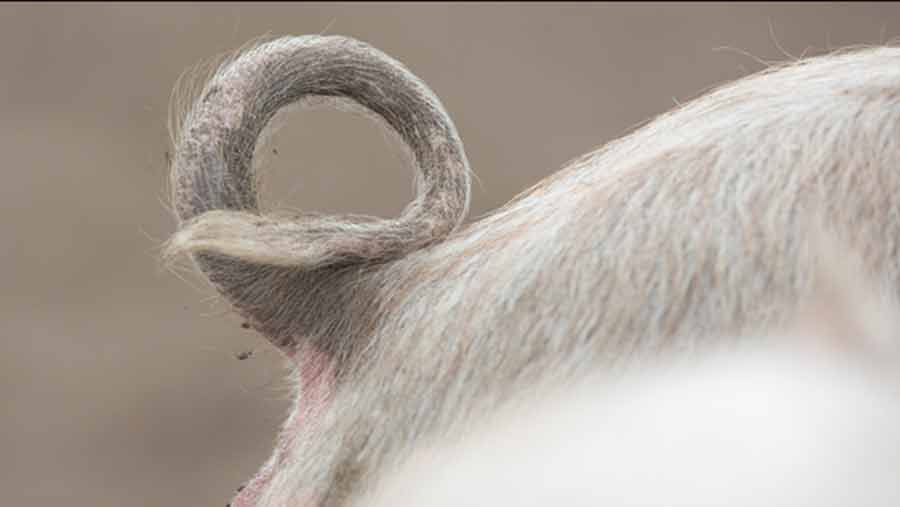EC offers guidance to reduce pig tail docking
 © Tim Scrivener
© Tim Scrivener The European Commission (EC) has issued best practice guidelines to reduce the need for pig tail docking.
The six-point guidance, detailed in a non-binding EC recommendation, was issued this week over concern current legislation on pig tail docking is not consistently adhered to across all member states.
“Husbandry systems differ across the member states,” the EC recommendation reads. “It is therefore necessary to recommend at union level best practices aimed at reducing the need for tail-docking and optimised solutions for providing enrichment materials.”
Tail docking of pigs is carried out to prevent tail-biting – abnormal aggressive behaviour in pigs widely referred to as vice. The need for exploration and foraging is considered a major underlying motivation behind tail-biting. Competition for feed, the absence of straw, and the presence of slatted floors are also thought to contribute.
See also: US dairy industry moves to phase out tail docking
Under current legislation, tail docking must not be carried out routinely, only when there is evidence of injury to sows’ teats or to other pigs’ ears or tails. Before considering tail docking, other measures, such as environment and stock density, should be taken to prevent tail-biting.
Member states are also required to ensure pigs have permanent access to a sufficient quantity of enrichment material, such as straw, hay, wood and sawdust, to enable the manipulative and investigative behaviour that come naturally to pigs.
In line with the current legislation, the EC has called for member states to ensure farmers carry out a risk assessment of the incidence of tail-biting.
Based on this assessment, it says farms should consider management changes, such as supplying appropriate enrichment material, comfortable environmental condition, and providing a balanced diet.
EC tail-biting recommendations
1. Member states should:
- ensure that farmers carry out a risk assessment of the incidence of tail-biting based on animal and non-animal based indicators.
- establish compliance criteria with the requirements set out in the legislation and make them publically available online.
2. When carrying out the risk assessment the following parameters should be checked:
- enrichment materials provided
- cleanliness
- thermal comfort and air quality
- health status
- competition for food and space
- diet
3. Enrichment materials should be safe and have the following characteristics:
- edible
- chewable
- investigable
- manipulable
4. Enrichment materials should be provided in such a way that they are:
- of a sustainable interest so as to encourage the exploratory behaviour of pigs
- accessible for oral manipulation
- given in sufficient quantity
- clean and hygienic
5. Enrichment materials should be categorised as:
- optimal materials (possessing all the characteristics listed in points 3 and 4)
- suboptimal materials (possessing most of the characteristics listed in 3 and 4)
- materials of marginal interest providing distraction for pigs
6. Assessment method for checking access to enrichment materials should include checks on:
- animals indicators, such as the presence of bitten tails, skin lesions and/or abnormal behaviour by pigs
- non-animal indicators, such as the frequency of renewal, accessibility, quantity and cleanliness of the enrichment materials provided
Tail docking is a “common issue” for all member states, with no easy solution, says Zoe Davies, chief executive of the National Pig Association.
“The fact producers still need to be able to tail dock, albeit as a last resort, means that of course there is room for improvement,” says Mrs Davies. “However, it is widely accepted that tail biting is a very complicated issue, which is unfortunately not an easy one to resolve.
“There are many triggers that can cause an outbreak from the pig itself (genetics) to environmental issues, and because of that researchers and the industry have been trying to resolve the issue for decades.
“It isn’t simply a case of reducing stocking density and chucking in some straw,” she adds.
